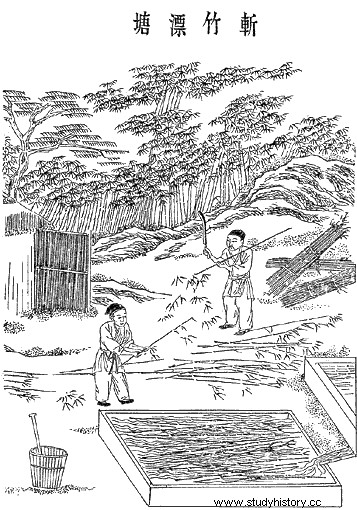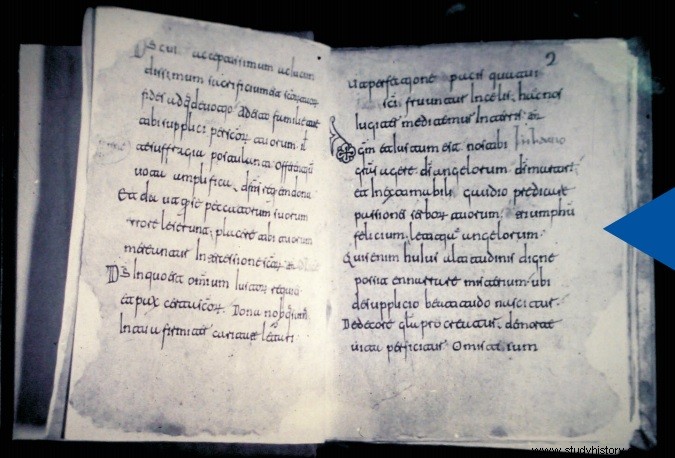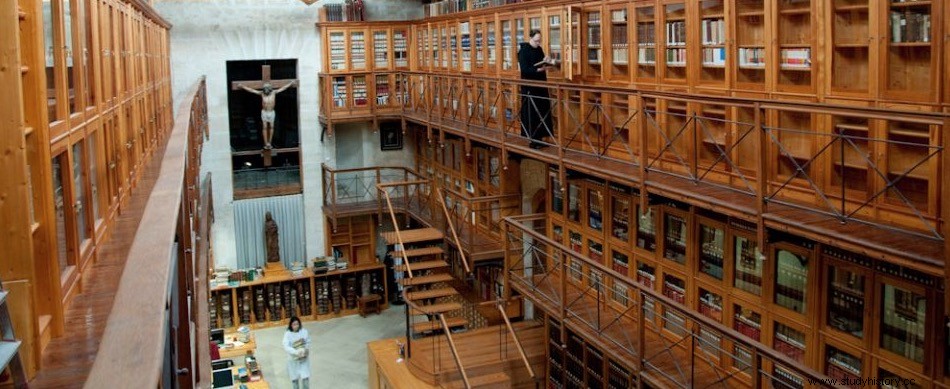The Egyptians were writing from before the 30th century B.C. on papyrus, a plant material made from the plant of the same name (Cyperus papyrus ) that grows on the banks of the Nile. Later, during Greco-Roman antiquity, the use of parchment was popularized, based on tanned and polished sheep or goat skins to allow the ink to fix. The high cost of this last material meant that, from the 8th century onwards, copyists reused parchments by erasing them and writing on top, giving rise to the palimpsests .
But the Chinese found a solution as early as the 2nd century BC. with the development of rudimentary forms of paper. In the year 105 AD Cai Lun, adviser to Emperor He of Han, invented a new process for its manufacture, which would be used exclusively in China for 500 years, until they came into contact with the Arab world.
It happened, probably, as a result of the battle of Talas that took place in the year 751 AD. on the banks of the river of that name in present-day Kyrgyzstan, between the Abbasid caliphate and the imperial Tang dynasty.

There is no consensus among historians, but some argue that the Chinese prisoners captured in the battle began to produce paper in Samarkand, thus introducing it to the Arab world, from where it would later reach Europe through the Iberian Peninsula in the 11th century.
It would be in Játiva where the first European paper mill would be created in 1056. The Arab geographer Al-Idrisi, born in Ceuta and who lived in the Norman court of Roger II of Sicily, would write in his book Kitab Ruyar in 1154:
That is why it is not unusual that the first book in Europe created (partially) with paper is kept in the Monastery of Santo Domingo de Silos, in Burgos. The exact date of its creation is not known, but it does have to be before the year 1036 (because the manuscript follows the Mozarabic rite, replaced that year by the Gregorian).

It is the so-called Misal Mozárabe de Silos , composed of 157 pages, of which the first 39 are on paper and the rest on parchment. Although it is kept in the monastery of Silos, it was not made in its scriptorium , but in the monastery of Santa María la Real de Nájera, La Rioja (which houses the pantheon of the kings of Nájera-Pamplona).
The paper of these 39 pages was not manufactured in Silos either, but rather comes from a Muslim factory.

However, Gonzalo Gayoso points out that it could have been made in an area near Silos because there were monasteries there that were populated or gave shelter to Mozarabic monks who fled from Al-Andalus .
The missal itself is made of linen and of little refinement, without watermark. For this reason, it is not as valuable as other codices in the same library, except for the fact that it is the first paper book in Western culture.
A few years ago, in 2013, Umberto Eco's visit to Silos was much commented on, where he was allowed to leaf through it, because he mentions it in his famous novel The name of the rose .
